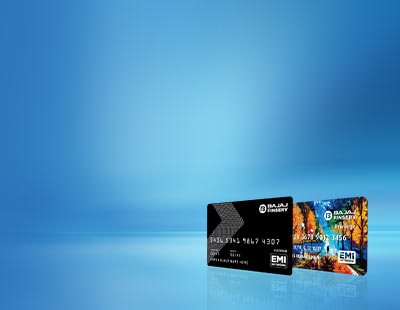


Whether you own a credit card, a debit card or an EMI card, it is important to keep track of the card details and your transaction on the card. This way, you can easily pay your dues on time and ensure that there are no errors in your purchase records. If you own the Bajaj Finserv EMI Network Card, you can access all the details pertaining to your card on the Bajaj Finserv customer portal. This is a one-stop solution to managing your card and your purchases easily, with just a few clicks.
The Bajaj Finserv EMI Network Card is a product that allows you to pay for eligible purchases in the form of convenient and easy EMIs. You can buy electronics, appliances, lifestyle products and more from our partner stores and convert the purchase price into no cost EMIs effortlessly. This includes over 1.2 lakh partner stores across the country, with over 1.2 million products on sale. So, you no longer have to worry about huge upfront costs. Whether it is a new TV or smartphone that you want, or whether you are booking a flight, you can divide the price into easy monthly instalments with the Bajaj Finserv EMI Network Card.
The Bajaj Experia Portal is a one-stop platform that contains all the details pertaining to your EMI card and the loans you have availed thereon. Here is a closer look at the details you will find on the portal when you use your Bajaj Finserv login credentials.
Your EMI card comes with an expiry date. You need to be aware of this date, so you can renew your card on time. By logging into the customer portal, you can check this information.
On the Bajaj Finserv customer portal, you will also find your spending limit and the amount of that limit you have already utilised. This will help you keep your credit utilisation ratio below 30%, so your credit score is not affected negatively. The credit utilisation ratio is simply the portion of your credit limit that you use. For example, if you have a spending limit of Rs. 2 lakhs on your card, you should ideally use up to Rs. 60,000.
If you have already made purchases with your card, you can find the details of those EMIs on this portal. This includes the EMIs that have been paid as well as the EMIs that are pending. By keeping an eye on this information, you will know when your next EMI is due.
You will also find information about any down payments that you have made on your purchases. The good news is that the down payment on most purchases made with the card is very low. In many cases, there is no down payment needed.
Lastly, using your Bajaj Finserv login, you can also find the information pertaining to the dealers from whom you have made your purchases.
The Bajaj Finserv login process is simple and takes just a few minutes. You can log into the Bajaj Finserv customer portal with just a few simple steps, as explained below. Step 1: Visit the Bajaj Finserv customer portal. Step 2: Enter your registered mobile number, which is linked to your Bajaj Finserv EMI Network Card. Step 3: You will receive an OTP on your registered mobile number. Enter this and click on ‘Login’ to complete the process. That’s all it takes! See how the Bajaj Finserv login process only involves three easy steps? You can even do this when you are on the go, by using the Bajaj MARKETS mobile App.
See how easy it is to complete the Bajaj Finserv login process. Remember to log into your account at regular intervals to get a better idea of your card’s status and the limit available. This will ensure that you don’t overuse your credit limit. It also ensures that you use your credit facility in a responsible manner, so your credit history and your credit score are not adversely affected.